EremophilaKrichauff Ranges Fuchsia (Eremophila ovata) Native Fuchsia (Eremophila latrobei) MacDonnell’s Desert Fuchsia (Eremophila macdonnellii) Silky Eremophila (Eremophila nivea)
Endemic to the Northern Territory, Eremophila ovata is commonly known as the Krichauff Ranges Fuchsia. It is a small, spreading shrub with hairy branches and leaves. The flowers are purple or pink with white inside. There is also a white variety.
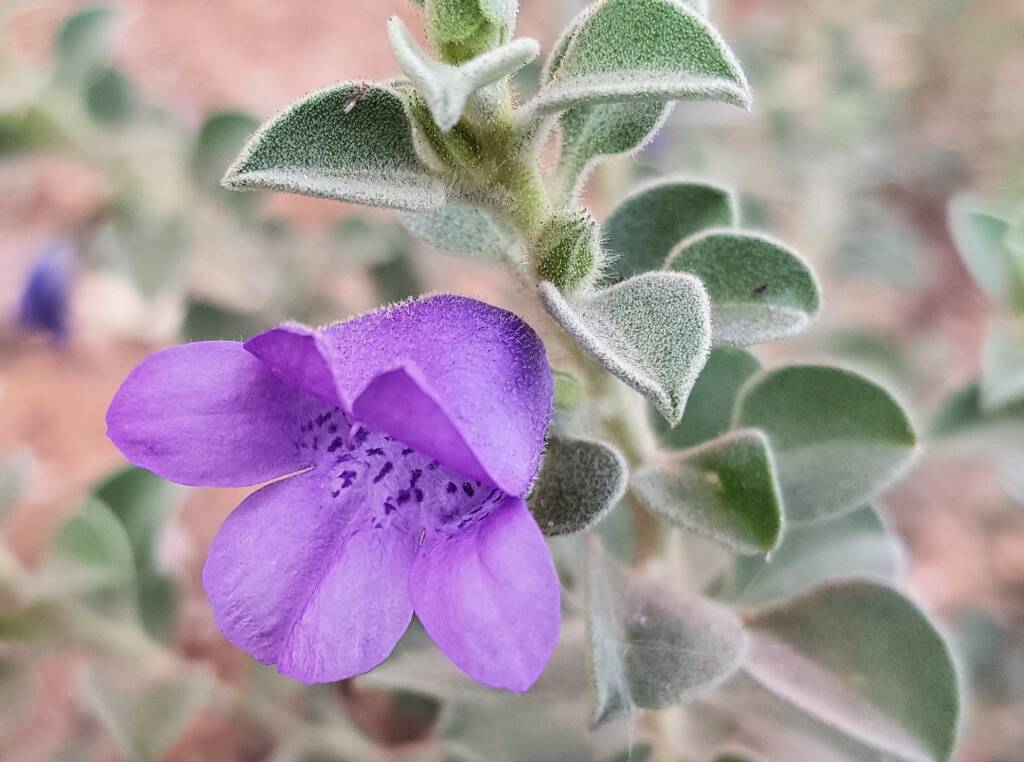
First formally described by Robert Chinnock in 1979 and published in Journal of the Adelaide Botanic Garden. From the Latin ovata meaning “egg-shaped”, referring to the shape of the leaves.1
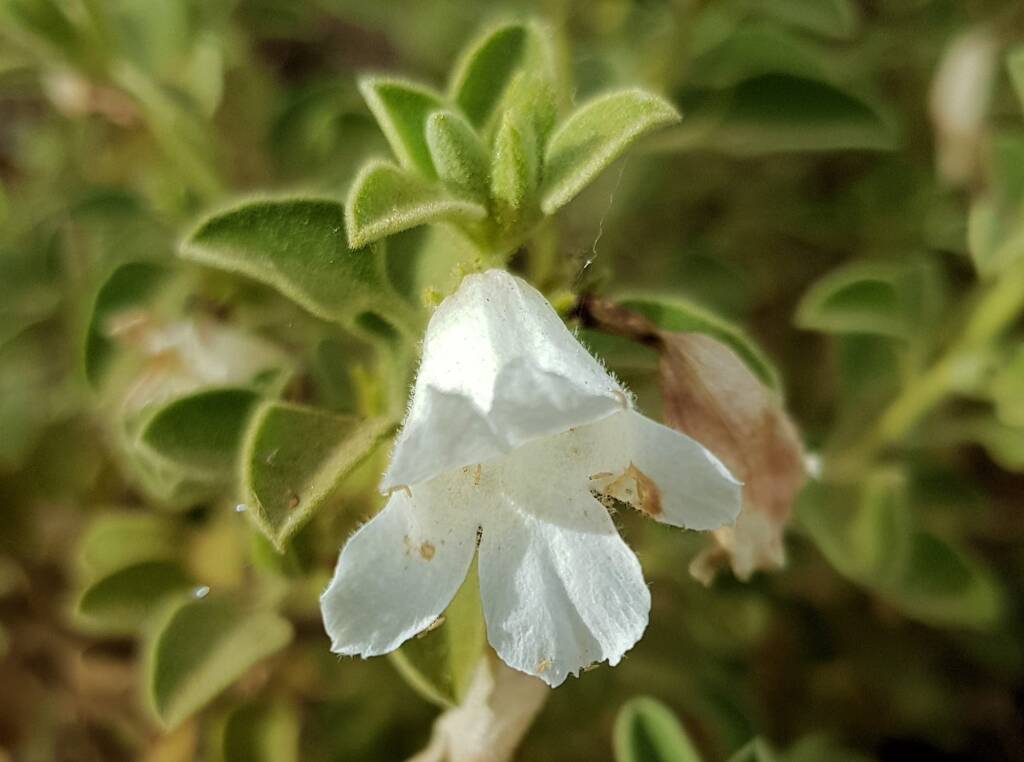
The branches are densely covered with white or yellow glandular hairs. The leaves are 10-25 mm long and 9-14 mill wide (not including the leaf stalk), alternately arranged along the branches. The leaf stalk are 3–7 mm long. The leaves are elliptic to egg-shaped, hence the Latin word ovata, and are covered with hairs, the underside being more densely covered. Sometimes the leaves eventually become glabrous, meaning free from hair or down; smooth.
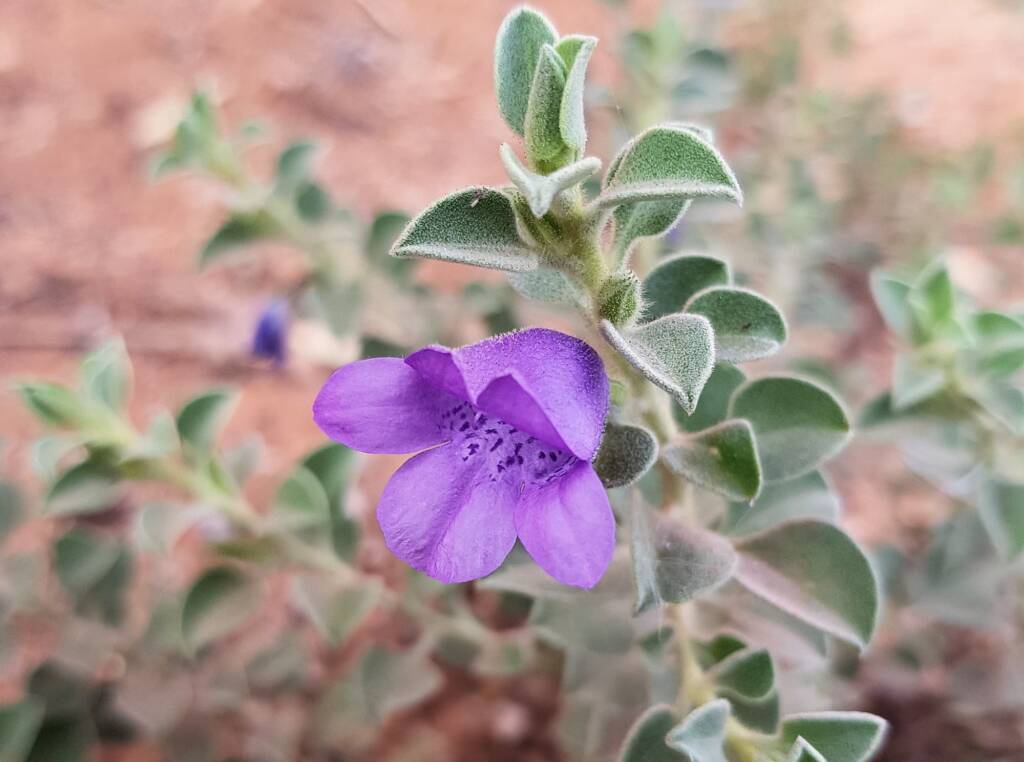
Flowering mainly from winter to spring, the flowers of the Eremophila ovata appear singly from the leaf axils, on a stalk that is less than 2 mm long. There are 5 green, hairy, lance-shaped or triangular sepals about 8.5–10.5 mm ) long. The petals are 18–30 mm long and joined at their lower end to form a tube. The petal tube of the Eremophila ovata is lilac-purple in colour, with the inner part of the tube white with lilac spots inside. The outside of the petal tube and the lobes are hairy but the inside surface of the lobes is glabrous (smooth) whilst the inside of the tube is filled with woolly hairs. There are 4 stamens that are fully enclosed in the petal tube. The fruit are oval-shaped, about 4.5–7 mm long and hairy.
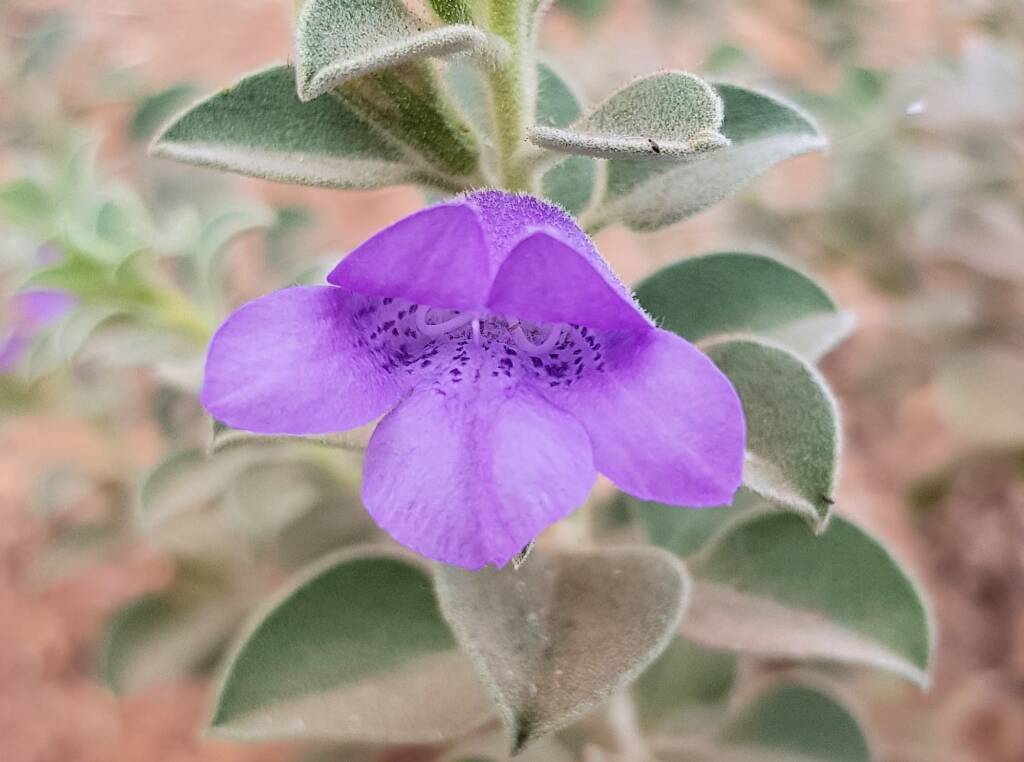
A fast growing but short-lived plant, Eremophila ovata are found to occur in the George Gill and Gardiner Ranges in the Northern Territory, growing in gravelly soils on the slopes and in the gullies.


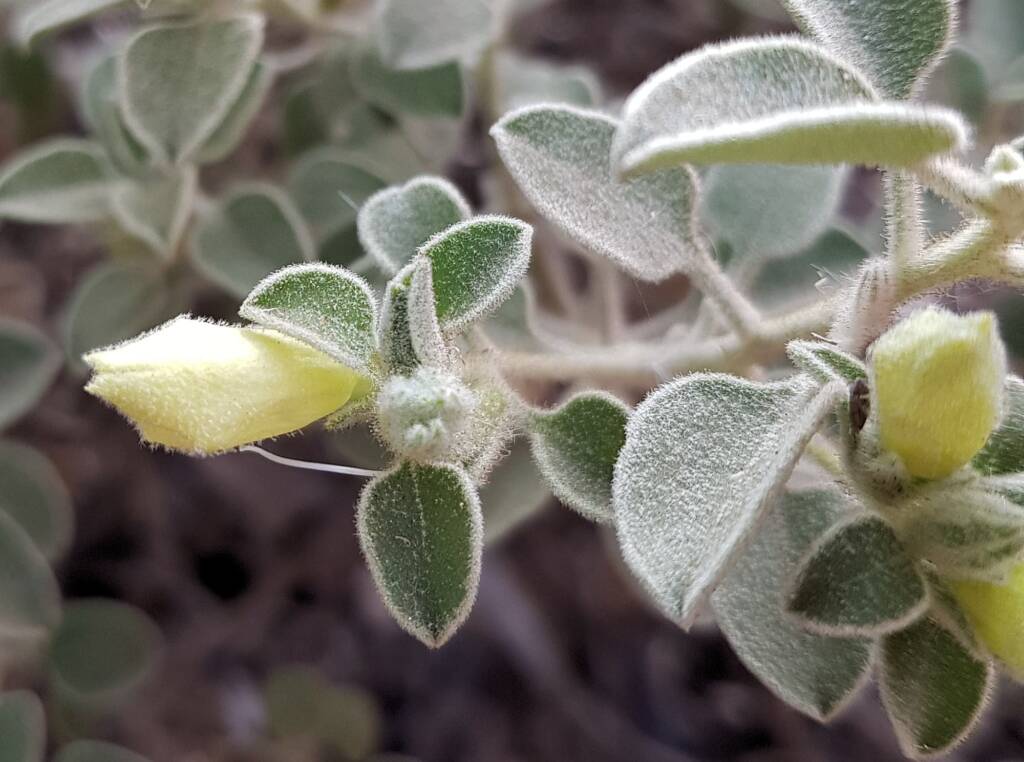
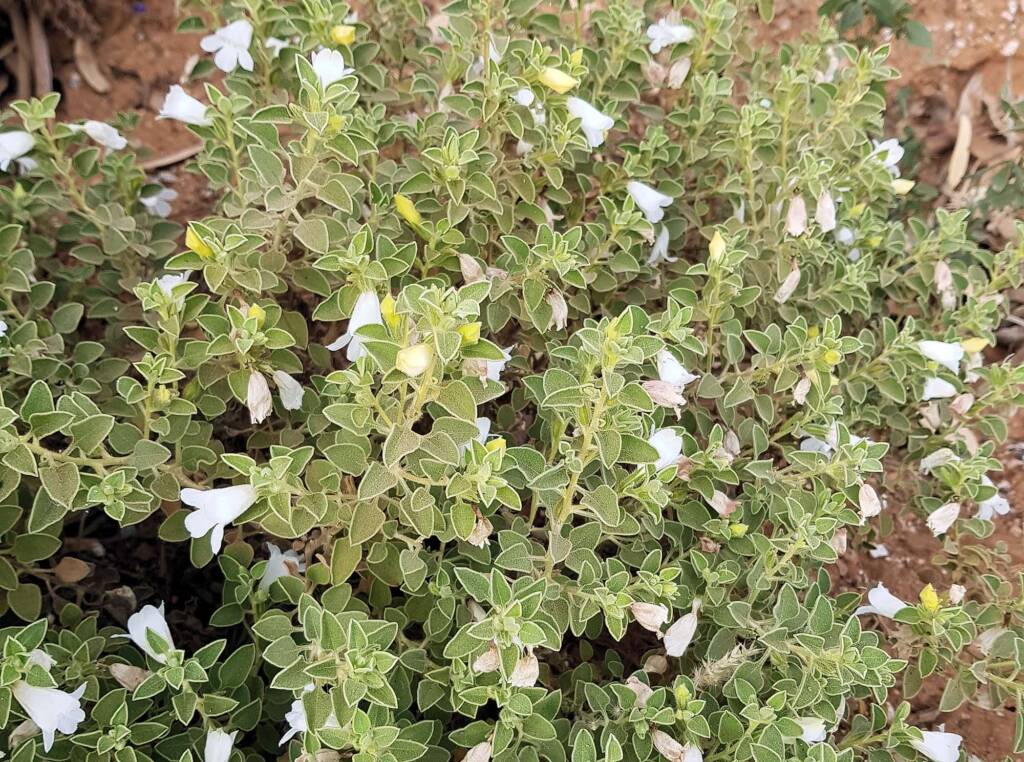
- Scientific classification
- Kingdom: Plantae
- Phylum: Charophyta
- Class: Equisetopsida
- Subclass: Magnoliidae
- Superorder: Asteranae
- Order: Lamiales
- Family: Scrophulariaceae
- Genus: Eremophila
- Species: Eremophila latrobei
- Number of subspecies including:
- Eremophila latrobei var. latrobei
Footnote & References
- Chinnock, Robert J. (2 April 1979). “Ten new species of Eremophila (Myoporaceae) from Central and Western Australia” (PDF). Journal of the Adelaide Botanic Garden. 1 (4): 237–239, https://data.environment.sa.gov.au/Content/Publications/JABG01P237_Chinnock.pdf
EremophilaKrichauff Ranges Fuchsia (Eremophila ovata) Native Fuchsia (Eremophila latrobei) MacDonnell’s Desert Fuchsia (Eremophila macdonnellii) Silky Eremophila (Eremophila nivea)
FloraFlora in Australia Flora Index Acacia Anigozanthos (Kangaroo Paws) Annual Yellowtop Apium prostratum subsp. prostratum var filiforme Apple Bush (Pterocaulon sphacelatum) Australian Bluebell Australian Gossypium Banksia Batswing Coral Tree Billy Buttons Birdsville Indigo Blue Pincushion Bush Banana Callistemon Callitris drummondii (Drummond’s Cypress Pine) Calothamnus quadrifidus Cape Honeysuckle Cassia fistula (Golden Shower) Cattle Bush Common Heath Crotalaria Darwinia wittwerorum (Wittwer’s Mountain Bell) Daviesia oppositifolia (Rattle-pea) Desert Oaks Drumsticks Eremophila Eucalyptus Ficus Flannel Cudweed (Actinobole uliginosum) Georges Indigo Goatshead Burr (Sclerolaena bicornis) Golden Everlasting Goodenia Gossypium Grass and Grasses Grass Trees Grevillea Grey Germander Hakea Kapok Bush (Aerva javanica) Lambertia sp Leptospermum MacDonnell Ranges Cycad Maireana scleroptera Mexican Poppy Minnie Daisy Mistletoe Family Nardoo Native Apricot Nicotiana megalosiphon subspecies sessilifolia Nuytsia floribunda Orange Spade Flower Orchidaceae Parakeelyas (Calandrinia) Pebble Bush (Stylobasium spathulatum) Perennial Yellow Top Pink Everlasting Pink Rock Wort Poached Egg Daisy Portulaca Proteaceae Ptilotus Quandong Resurrection Fern Rosy Dock Ruby Saltbush Santalum Solanum Spike Centaury Spinifex Storkbill (Erodum cygnorum) Striped Mint Bush Sturt’s Desert Pea Sturt’s Desert Rose Tall Saltbush Tangled Leschenaultia Tar Vine Tribulus eichlerianus Upside-down Plant Urodon dasyphylla Variable Daisy Waratah (Telopea) Wertabona Daisy White Cedar (Melia azedarach) White Indigo White Paper Daisy Wild Passionfruit Wild Stock Woolly-Headed Burr Daisy Woolly Bush Yellow-keeled Swainsona
